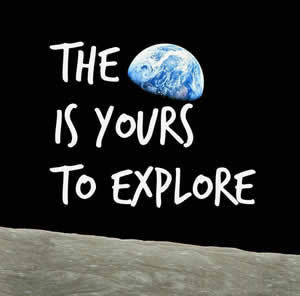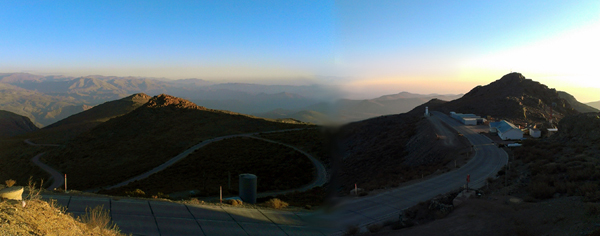GPI 3rd Commissioning Run – Introduction

Characterizing the exoplanet HD 95086b with GPI.
April 26, 2014
Tour of the Telescope
May 15, 2014Hello GPI fans – this is my first post at Cosmic Diary. I’m a NASA Sagan postdoctoral fellow at the University of Arizona and a member of the Gemini Planet Imager science team. While I was at UC-Santa Cruz for my PhD, I worked with the PI, Bruce Macintosh, to develop MEMS deformable mirrors for GPI. These days, I spend a lot of time in Chile commissioning extreme AO systems, which is pretty fun! Specifically, I’m usually working on and blogging about the Magellan AO system, MagAO.
But this week, I’ve come down to Chile to help with GPI’s 3rd commissioning run. I’m excited to be here and to see GPI on sky!
My travels were delayed due to various weather and communication issues, so it was great to finally see the Andes, the La Serena airport, the Gemini carry-all, and the Gemini dorms:
I headed up the mountain and saw the Gemini telescope and GPI just before sunset:
Andrew the telescope operator gave us new arrivals a tour of Gemini S telescope and GPI:

Left: The 8-m Gemini South telescope. It’s f/1.8 so that’s why it’s so tall. Center: The primary mirror reflecting the sunset. Right: GPI hangs at the Cassegrain focus of Gemini S.

The SOAR telescope and the seeing monitor along the ridge by Gemini – view through the louvers opened to make the airflow cool and laminar
GPI is a complicated system with an international user base requiring queue-able observations and a user-friendly pipeline. As you might imagine, this means a lot of work has to be done. Thus, we had 13 people in the control room on my first night – Bruce, James, Naru, Fredrik, Pascale, Mark, Schuyler, Alex, Jason, Jerome, Markus, Andrew, and myself. We have ~3 people working on commissioning and optimizing the AO system, ~3 people planning and preparing observations, ~3 people working on the pipeline and analyzing data, and ~3 people from Gemini working on the telescope side of things. Since it’s my first GPI run, I’m getting up to speed and helping with observations and data.

There were 13 people in the control room my first night – here we see Schuyler, Andrew, Mark, Jason, Markus, Bruce, Naru, and Pascale. Also, active team members via telecon have been Lisa, Jeff, Marshall, and Laurent.
Here’s the main GPI control station:
We’ve been doing lots of tests for lots of modes. We have direct imaging, coronagraphic imaging, polarimetric imaging, and interferometric imaging via non-redundant masking (NRM). We have to operate in various seeing conditions and on bright to not-so-bright stars. We have two main AO loops – the woofer and the tweeter – and we optimize the AO gains as well as adjust the centroider gain and LQG filter for various seeing and wind conditions. We have to calibrate the detector, the image scale and orientation, the spectra, the Stokes polarization parameters, the flux measurements. We have to think about alignment, flexure, dark current, operations, and observations. And we want to find planets, planets, and planets! And disks, moonlets, and lots of other exciting stuff!
So – there is a lot to test, calibrate, and measure. That’s why we’ve had 3 commissioning runs plus the early science run. Coming tomorrow… more on what we’re doing this run!













